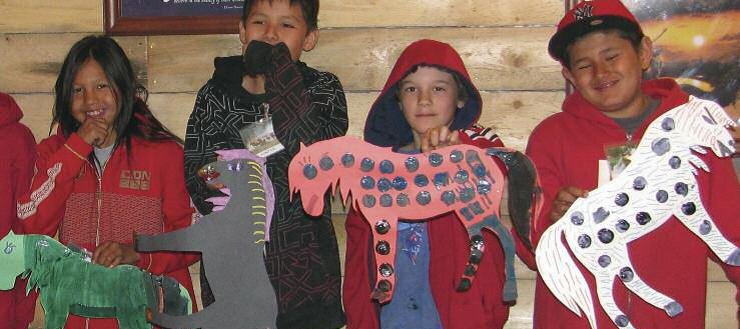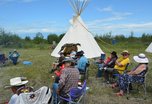Horses important to cultural healing

Related Programs

One Arrow First Nation, a Cree community north of Saskatoon, has retained its ties to its historic horse culture. Over the past year, the band, along with the One Arrow equestrian Centre, has partnered to create a program where horses and traditional knowledge are part of a healing process for youth and community.
“One Arrow has made a significant investment financially, mentally, physically, emotionally and spiritually in using equine Assisted Learning and therapies as a fundamental strategy to instill hope, healing and prosperity for the community,” explains Chief Paul Dwayne, in a letter to SaskCulture. He explained how, the youth of One Arrow First Nation are facing similar hardships to those of other First Nations communities: significant difficulties at home and school, four times the rate of youth being placed in foster care than non-Aboriginal children, failing to complete high school, alienation and depression, high incidents of abuse and high rates of risk behavior and suicide.
The leadership at One Arrow First Nation wanted to creatively and proactively address these problems. In 2011, they committed to support the I.D.E.A.L. (Inspire Direction equine Assisted Learning) program that included a strong cultural component integrated into the program.
“The horse is a powerful spiritual entity in Cree culture,” writes Chief Dwayne of One Arrow First Nation, “The horse gives us strength and symbolizes freedom.” The horse, or mistatim which literally translates as ‘Big Dog’ in the Cree language, has a special place of honor in the cultural heritage of First Nation peoples. The introduction of the horse during European settlement revolutionized First Nation cultures of the plains and this relationship was quickly integrated into fabric of the day to day life. The horse greatly enhanced capabilities in hunting, travel and trade and to this day, this bond between human and horse is considered sacred.
Elder Gerald Prosper, who has been supportive from the beginning and onset of the program, was engaged over the summer, thanks the help of SaskCulture’s Aboriginal Arts and Culture Leadership Grant, to incorporate the cultural components of the IDEAL program. The main activity involved engaging youth in the program during summer camps in July and August. At these camps youth learned the historical and cultural significance of the horse from a Cree world view. Prosper incorporated the standard programming of the equine assisted learning and therapies and tied it back to culture for both the young people participating in the workshops and also through mentorship with the staff of the centre.
According to Koralie Gaudry, one of the equine Centre’s programmers, “It was amazing. Kids were sitting at the door steps at 8 a.m. before the staff even showed up. The closeness as a group really grew.”
Other communities, such as St. Louis, Nipawin and other First Nations bands, are now interested in the program, says Gaudry. Besides reaching out to new communities, the equine Assisted Learning Centre plans to continue to build the cultural component of the program. “The connection with horses, culture and spirituality,” she adds, “is effective in building strong, healthy and culturally knowledgeable young people.”
The grand opening of the equine Assisted Learning Centre was on June 9, 2011, which saw roughly 300 guests including delegates of the FSIN and One Arrow Leadership, featured several different demonstrations.

